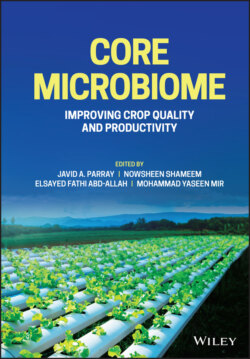Читать книгу Core Microbiome - Группа авторов - Страница 6
Preface
ОглавлениеAn overabundance of microbial cells is present in every gram of soil, and microbes are found extensively in plant and animal tissues. The mechanisms governed by microorganisms in the regulation of physiological processes of their hosts have been extensively studied in light of recent findings on microbiomes. In plants, the components of these microbiomes may form distinct communities, such as those inhabiting the plant rhizosphere, the endosphere, and the phyllosphere. In each of these niches, the “microbial tissue” is established and responds to specific selective pressures. Although there is no clear picture of the overall role of the plant microbiome, there is substantial evidence that these communities are involved in disease control, enhance nutrient acquisition, and affect stress tolerance. This book first summarizes features of microbial communities that compose the plant microbiome and further presents a series of studies describing the underpinning factors that shape the phylogenetic and functional plant-associated communities. We advocate that understanding the mechanisms by which plants select and interact with their microbiomes may directly affect plant development and health and further lead to the establishment of novel microbes. Despite being one of the simplest metazoans, corals harbor some of the most highly diverse and abundant microbial communities. Differentiating core, symbiotic bacteria from this diverse host-associated consortium is essential for characterizing the functional contributions of bacteria but has not been possible yet. Here, we describe the coral core microbiome and demonstrate clear phylogenetic and functional divisions between the micro-scale, niche habitats within the coral host. In doing so, we discover seven distinct bacterial phylotypes that are universal to the core microbiome of coral species, separated by thousands of kilometers of oceans. The two most abundant phylotypes are co-localized specifically with the corals’ endosymbiotic algae and symbiontcontaining host cells. These bacterial symbioses likely facilitate the success of the dinoflagellate endosymbiosis with corals in diverse environmental regimes. This book primarily focuses on selecting positive and effective interactive core microbiome that are both phenotypically and genotypically very adaptive and sustainable, which further improve crop quality and productivity vis-à-vis sustainable agriculture. The bioengineering concept for rhizosphere improvement has also been discussed in one of the chapters. The book also highlights the structure, characterization, and biotechnological application of aquatic core microbiomes.
Javid A. Parray
PhD, PDF
